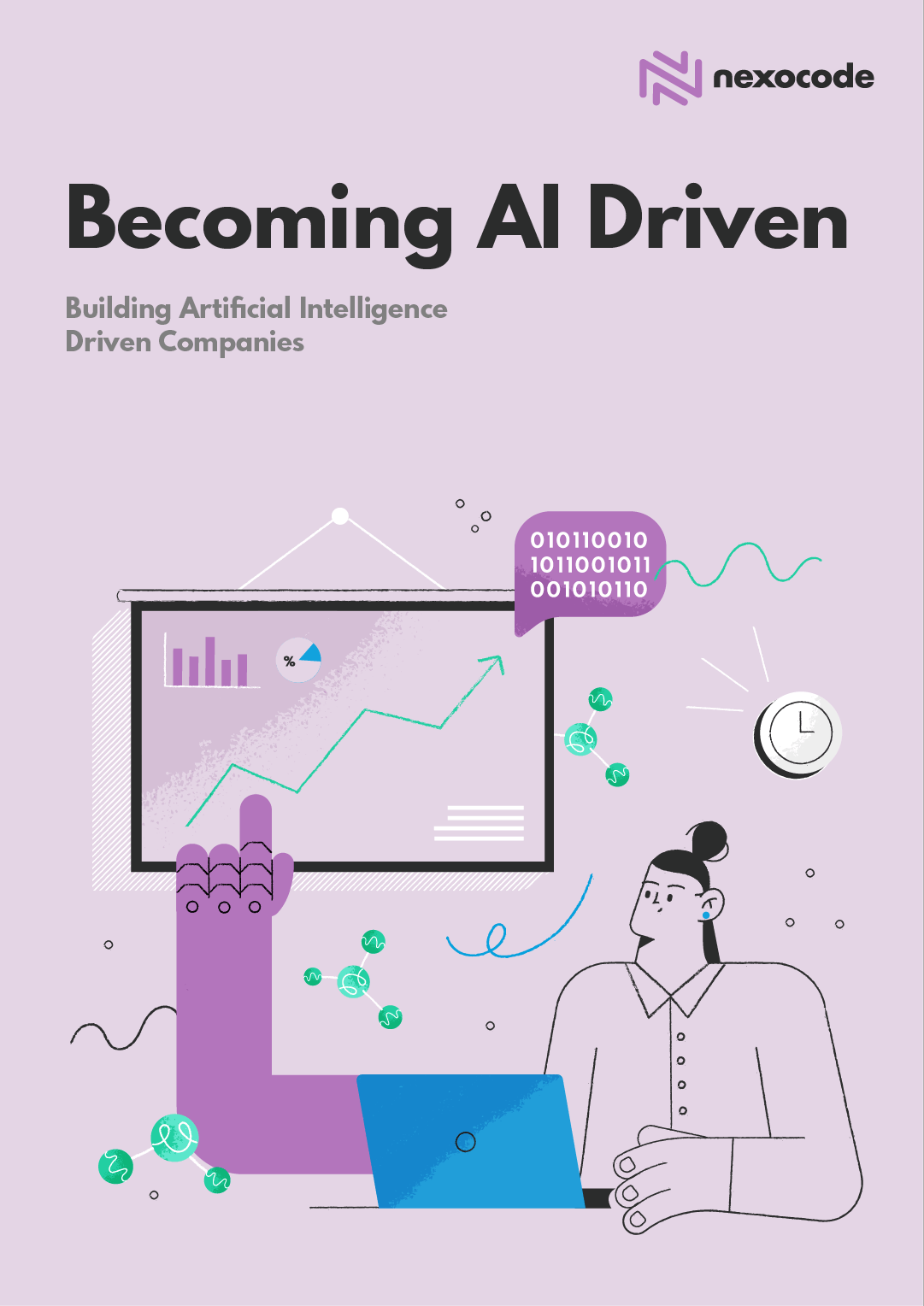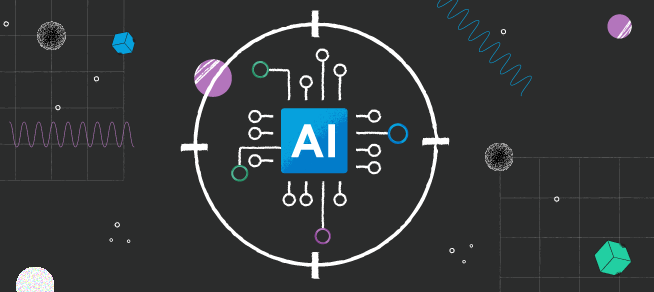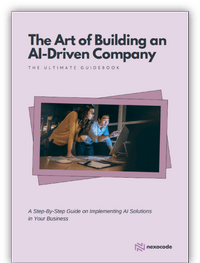Artificial intelligence (AI) projects can be highly complex and challenging to scope and manage. If not done correctly, the project can quickly spiral out of control and become a costly disaster.
In this blog post, we will discuss how to define the scope of the machine learning project and set achievable goals for your machine learning initiative. We will also outline the key project management considerations for AI projects and provide step-by-step instructions on initiating this kind of effort. Finally, we will highlight the AI development lifecycle and some of the challenges that need to be faced when starting a machine learning project.
TL;DR
• AI projects can be complex and challenging to manage, requiring proper scoping and goal-setting thats why define the scope and goals is so important.
• The AI project lifecycle involves data collection and preparation, model development, deployment and monitoring, and retraining and redeployment.
• Project management for machine learning projects requires an agile approach and constant iteration.
• Deliverables and KPIs should be aligned with the project objectives and may include pre-trained models, validation sets, and performance metrics.
• Data considerations include understanding the types and sources of data, data preparation, data access, and GDPR compliance.
• If you want to kick off your own AI development project but need professional support to get started,
reach out to us.
AI Project Lifecycle
AI project lifecycle differs from traditional project management in several ways:
- It is essential to understand that machine learning algorithms are not static; they are constantly evolving and need to be regularly retrained on new data sets.
- The machine learning development process is often iterative and incremental in nature, meaning that new features and improvements are constantly being added.
- Some machine learning projects (e.g., deep learning techniques for computer vision or natural language processing) usually require a lot of data to be successful.
When embarking on an ML project, a number of machine learning development lifecycle considerations need to be taken into account. The entire process can be divided into the following project phases:
Data Collection and Preparation
In order to train machine learning models, large amounts of data are required. This data needs to be collected from various sources, cleaned, and prepared for training. Depending on the size and complexity of the project, this stage can take months or even years to complete.
Data Science and Machine Learning Model Development
After the data is collected and prepared, it can be used to build machine learning models. This project stage will require a team of data scientists and machine learning engineers to develop and tune the algorithms. The model training process can also be time-consuming, depending on the size and complexity of the project.
Model Deployment and Monitoring
Once the machine learning models are trained, they need to be deployed to make predictions on new data. This stage also involves setting up infrastructure for monitoring model performance and accuracy.
Model Retraining and Redeployment
As ML models constantly evolve, they need to be regularly retrained on new data sets. This process can be either handled manually by data scientists or can be automated and can be done periodically. Once the models are retrained, they need to be redeployed to make predictions on new data. More extensive projects usually have dedicated pipelines prepared for continuous integration and continuous delivery to streamline the deployment processes.
The project lifecycle described above does not give enough attention to the early stages of selecting an idea to pursue and project scoping. In machine learning, these two topics are of utmost importance and can make or break the success of your project.
Idea Selection
The first step in any machine learning project is developing an idea. This might seem like a trivial task, but it is actually one of the most important and challenging steps in the process. This is because machine learning is a vast field, and there are endless possibilities for what you can build. It is, therefore, important to spend some time thinking about what you want to achieve with your project and what problem you are trying to solve.
Some questions that you should ask yourself at this stage are:
- What business problem do you want to solve?
- What are your project goals?
- What data do you have available?
- What machine learning algorithms will you need to use?
- What infrastructure do you need in place?
Once you have a good understanding of the problem that you want to solve and the machine learning algorithms that you will need to use, you can move on to the next stage: project scoping.
Project Scoping
Project scoping is the process of defining the project’s boundaries in terms of its objectives, deliverables, timeline, and budget. It is essential to spend some time at this stage to ensure everyone involved in the project is on the same page. Otherwise, there is a risk of the project going off the rails later on.
Some questions that you should ask yourself at this stage are:
- What are the objectives of the project?
- What are the deliverables of the project?
- What are the milestones of the project?
- How will you structure the technical team?
- What is the timeframe for the MVP and the whole project?
- Who will be the responsible project manager?
- How will you streamline the communication between business stakeholders and the project development team?
Project Management Considerations for Machine Learning Projects
When defining the scope and goals of your project, it is essential to keep the following factors in mind:
Your Budget
You need to be clear about how much you are willing to spend on your AI solution. You must also understand how AI systems are budgeted and what constitutes a cost (data access, computational power, software, hardware, experts, etc.).
Your Timeline
You need to be realistic about how long it will take to implement your machine learning project. Your roadmap should highlight various milestones and the value you expect to see at each stage.
Your Team
You must clearly understand who will work on your ML project and their roles. You must also understand the skillsets required for each position to build a capable development team. Some key roles in a machine learning team would be data engineer, data scientist, machine learning engineer, technical project manager,
MLOps engineer, AI product manager, and AI designer.
Your Ideal Benchmarks and KPIs
You must set realistic benchmarks for your AI project. These benchmarks will help you measure the success of your project and determine whether it is achieving its objectives.
Your Risks
You need to be aware of the risks associated with your AI project and make sure you have the plan to mitigate these risks.
How to Define the AI Project Scope?
Now that we have gone over some of the critical considerations for machine learning projects let’s look at how to scope and manage such an effort.
The first step in defining your AI project’s scope is to express your project’s objectives.
Machine Learning Project Objectives
The objectives of your machine learning project will be determined by the business problem you are trying to solve.
Some common objectives for machine learning projects include:
- Improve customer satisfaction
- Increase revenue
- Reduce costs
- Increase efficiency
- Automate manual processes
Problem Definition
The crucial step in any machine learning project is defining the problem you are trying to solve. This may seem like a simple task, but it is pretty tricky.
If you are not careful, it is easy to get lost in the details and lose sight of the big picture. That is why it is vital to clearly understand the business context and the project’s objectives before you start working on the problem definition. The problem statement should be your guiding star throughout the machine learning project. As the development moves forward, project managers and product managers should constantly be reminding the team of why they are building this machine learning system in the first place.
Mapping Out the Functionalities
What outcomes do you want to see? How will the AI model function in a broader customer or service journey? What supportive functionalities need to be developed for the AI model to be useful?
Once you have answered these questions, you will have a clearer understanding of the scope of your AI project.
It is always valuable to map out the features that need development with a dedicated canvas. To be successful at this stage, make sure to include in the process domain experts and (or) users that will help you in the value assessment of each feature.
For UI-heavy systems iterating on mockups and product prototypes is a must. AI is no different – you should create prototypes that showcase how your AI model will operate once integrated into other systems and processes. This will enable you to keep track of the project requirements and ensure that all stakeholders are on the same page.
Creating a service schema or a more advanced prototype will also help you assess whether the project is feasible within the given constraints (budget, timeline, team skillset, etc.).
Thanks to this step, you will be able to understand what data is needed, how it should be structured, and the algorithms that need to be implemented.
Defining Project Deliverables and KPIs
The next step in scoping your machine learning project is to define the deliverables and KPIs. This will help you assess whether the project is on track and identify any potential risks.
Some typical deliverables for machine learning projects include:
- Pre-trained model
- Trained model
- Validation set
- Test set
- Model report and documentation
- Application with selected functionalities
When defining the KPIs for your machine learning project, it is essential to align them with the project’s objectives.
From the data science perspective, some typical KPIs in AI project management include:
- Prediction quality and accuracy
- Model confidence
- Training time
- Inference time
- Model size
- Resource usage (CPU, memory, etc.)
Depending on the problem statement and targeted functionality, some business metrics should also be tracked. For example, if the objective of the project is to increase revenue in an
eCommerce store with a
recommendation engine, then the key performance indicators should include the following:
It is important to remember that the scope of your AI project should be aligned with the team’s business objective. Your AI project should not aim to solve every problem in your business but instead focus on solving specific issues that will have a positive impact on your business.
Data Considerations
The following step in defining the scope of your AI project is to understand the
different types of data that you will need to train your model on and how much data you will need. What kind of data do you have? Is it possible to get or buy additional data? Where is this data located? How can you access this data? Do you have a data pipeline prepared? This might include raw data, customer data, product data, transactional data, financial data, etc.
Some projects need significant data preparation apart from data collection. For supervised learning, data labeling is a crucial step for project feasibility that takes time.
It would be best if you also considered how you will access this data and whether any GDPR compliance issues need to be considered. Data governance practices are essential from the start, and you will need a dedicated person responsible for data management tasks.
Selecting Technical Approach
Understanding the different types of machine learning technologies that you will need to use is a technical discussion that technical project managers should raise early with data scientists. What are the different types of algorithms that you can use? What are the different types of tools that you will need to use? This might include supervised learning, unsupervised learning, deep learning, reinforcement learning, etc. You also need to consider how you will implement these algorithms and what type of platform you will need to use.
Usually, you would need to start small with data inspection and
AI proof of concept development at the beginning, followed by iterations that increase benchmarks and solution complexity.
Establishing the Goal Infrastructure
The fourth step in defining the scope of your machine learning project is to understand the different types of infrastructure that you will need. What are the different kinds of infrastructure that can be used to train and deploy your model? Which infrastructure is best suited for your data and your objectives?
This might include on-premise servers, cloud-based servers, GPUs, etc. You also need to consider how you will set up this infrastructure and whether there are any integrations that need to be developed before deploying a production-ready model.
Project Management in the Era of Machine Learning
Artificial intelligence is radically changing the landscape of project management. The old waterfall approach to project management is no longer adequate for managing machine learning projects. Agile project managers also need to alter their methodologies and toolkits to stay ahead of the curve.
The machine learning development cycle is different from traditional software development. To successfully manage a machine learning project, you need to be agile and constantly iterate on your data preparation and model development. You also need to clearly understand your business objectives and the data you will need to train your model. By following these steps, you can define the scope of your AI project and ensure that it remains aligned with your business goals.
If you want to kick off your own AI development project but need professional support to get started,
reach out to us. Our AI experts can help you understand the different types of AI techniques, evaluate models, and advise on how to implement them. We can also help you establish the proper infrastructure for your project and develop a data pipeline that meets your specific needs. Contact us today to learn more about our services and how we can help you achieve project success.








